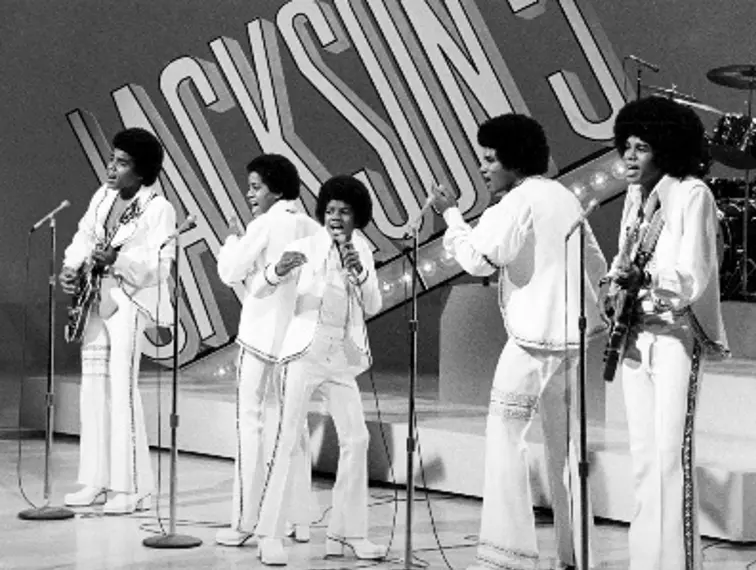
August 2, 2024
The Sound that Changed America: The History of Motown
Motown Records, founded by Berry Gordy on January 12, 1959, is not just a record label; it’s a cultural movement that brought together people from all walks of life through its unique sound and compelling narratives. As we gear up for the Houston Symphony's concert "The Music of Motown," let's take a moment to reflect on the rich history and lasting impact of this legendary label.
Humble Beginnings and Meteoric Rise
Motown’s name is a nod to the "Motor Town" it was founded in—Detroit. Berry Gordy, who once worked on production lines at the Lincoln-Mercury car plant, translated his assembly line expertise into creating hits. The headquarters, famously titled "Hitsville U.S.A.," was a signal that anyone who stepped through its doors was expected to contribute to the music in some way—whether by singing, dancing, writing, producing, selling, or managing.
Motown began with an $800 loan—around $8,600 in today’s money—from Gordy’s family. The first act signed was The Matadors, who quickly became known as The Miracles, led by Smokey Robinson.

The label’s first success was "Money (That’s What I Want)" by Barrett Strong, followed by its first Billboard No. 1 hit, "Please Mr. Postman" by The Marvelettes, and its first million-record-seller, "Shop Around" by The Miracles. These successes marked the beginning of Motown’s influence.

In the following decade, Motown produced a record number of chart-topping artists, including Martha and the Vandellas, Smokey Robinson and the Miracles, The Temptations, The Four Tops, Diana Ross and the Supremes, Gladys Knight and the Pips, The Jackson 5, Stevie Wonder, and Marvin Gaye. From 1961 to 1971, the label produced 110 Billboard Top Ten hits.
Smokey Robinson credited Motown with "breaking down barriers with music," as their acts found popularity among both white and black audiences worldwide.
Motown’s success was bolstered by its Artist Personal Development Department, established in 1964. This department aimed to help talented but inexperienced young singers develop their presentation styles. Maxine Powell, who led this initiative, taught artists how to walk, talk, think, and act like royalty.
The Birth of the Motown Sound
The "Motown Sound" is a blend of sacred and secular music, merging the call-and-response patterns of black gospel with the syncopation and improvisation of jazz. This innovative fusion included tambourines and hand clapping, blaring horns, interplay between lead singers and backup singers, driving bass lines, and foot-slapping drum parts. This distinctive sound was further enhanced by a unique reverb effect, achieved by pumping tracks through an echo chamber, as this was long before the use of computers and synthesizers in popular music.

A critical element of Motown's sound was its "radio box," a small, tinny-sounding radio crafted by Motown's chief engineer, Mike McClain. During the production process, the recordings were played through this device, which mimicked the sound of car radios, and ensured that the final product was memorable and impactful when played on the go. The songwriting teams like Holland-Dozier-Holland and the studio band known as The Funk Brothers played a significant role in creating the Motown Sound that captivated millions.
Cultural Significance
Motown was not just a black-owned corporation; it was a beacon of inclusivity, employing a multi-racial staff during a time when America was deeply divided. The 1967 Detroit riots, sparked by police raids in Black neighborhoods, highlighted the tension of the era. Despite this, Motown's music became a unifying force. Gordy’s vision was for everyone to enjoy the music, regardless of their background. The themes were simple and relatable, adhering to the philosophy of "Keep It Simple, Stupid (KISS).
Martha Reeves, a prominent Motown vocalist and lead singe for the Motown girl group Martha and the Vandellas, reminisced in Susan Whitall’s book, Women of Motown: “It was a beautiful feeling, when we were so full of hate and anger and everybody was so full of unrest, that we saw people actually join together, get out of their cars and dance to a song [Martha And The Vandellas’ 1964 smash hit ‘Dancing In The Street’] that meant we should rejoice… The Motown sound was a very big influence in the civil rights movement. It was not that we marched or paraded; we just promoted it through love.”
Transition to Los Angeles and the Motown Legacy
The late 1960s saw significant changes. The 1967 riots in Detroit led Gordy to look toward Los Angeles, seeking to integrate Motown’s music into TV and movies. The departure of Holland-Dozier-Holland and the rise of the Jackson 5 marked a new era. Artists like Marvin Gaye began to produce socially conscious albums like What’s Going On. In 1972, Motown moved to LA permanently, and Stevie Wonder released groundbreaking albums such as Talking Book, Innervisions, and Songs in the Key of Life within four years.
Motown was sold to MCA for $61 million in 1988, and eventually to Polygram, which is now part of the Universal Music Group. However, its legacy endures. Motown's influence on music and culture remains a testament to Berry Gordy's vision and the talent of countless artists who brought soul and unity to America and beyond.
Join us on September 28 and 29 for Ain’t No Mountain High Enough: The Music of Motown to celebrate this incredible legacy and relive the magic of Motown's greatest hits. It's a journey through music history that you won't want to miss!






